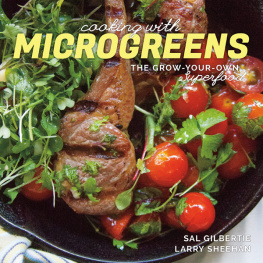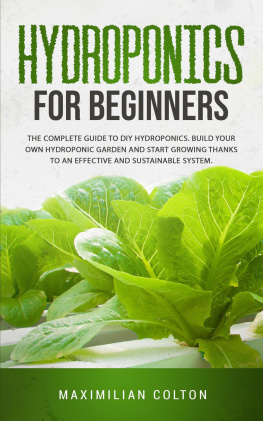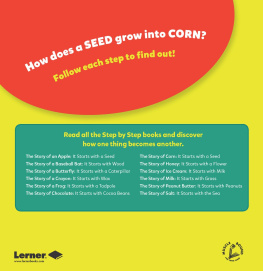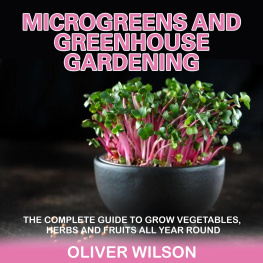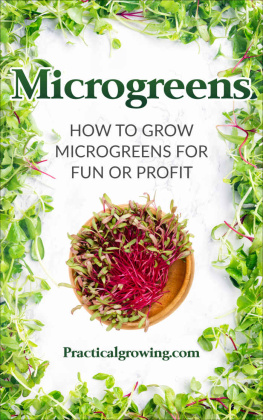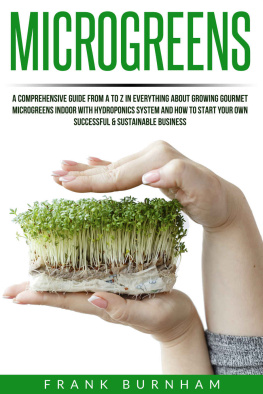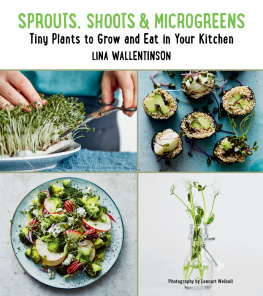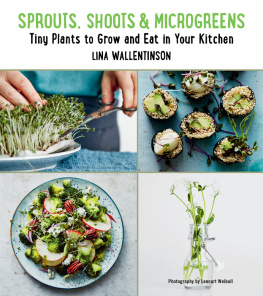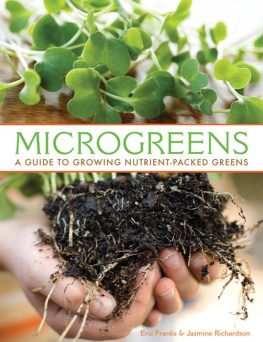

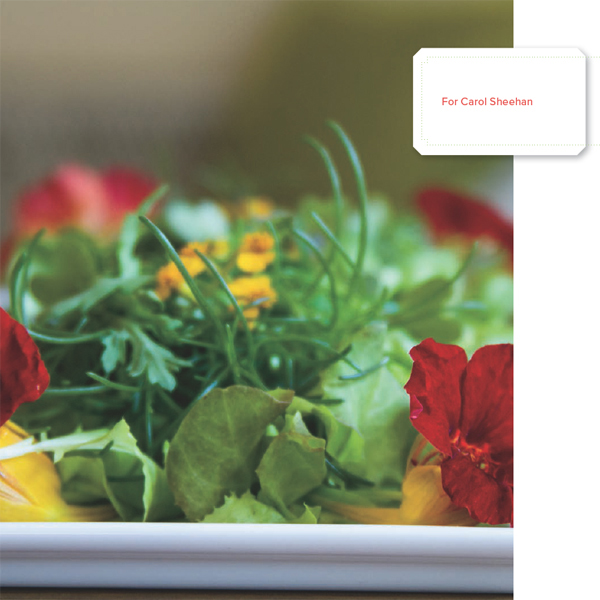
Henry Beary
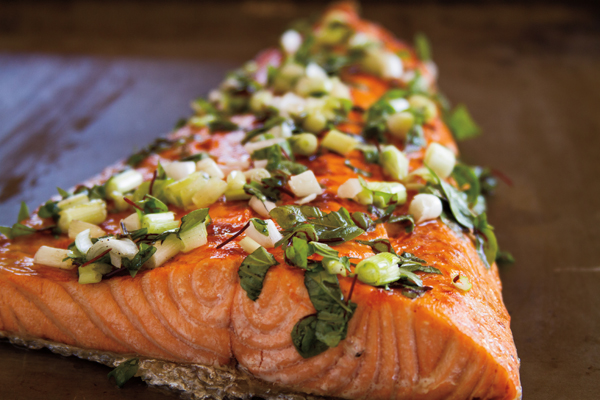
Henry Beary
Contents
Please bookmark your page before following links.
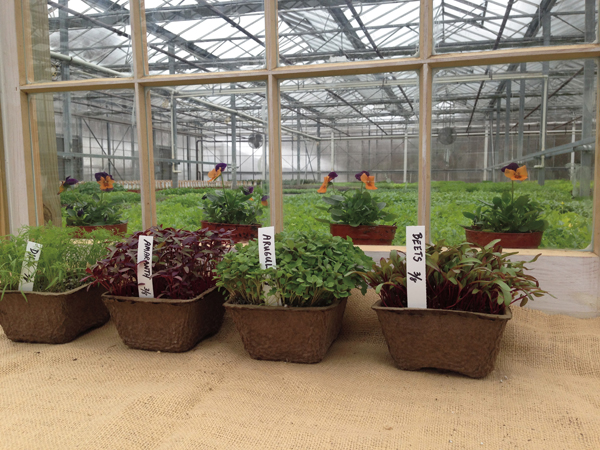
Peter Novajosky

Henry Beary
Growing microgreens at home is the closest thing to a personal salad bar as you can get. With very little spacea kitchen windowsill, a tabletop in a spare room, or any other grow-your-own setup you may improviseand just average or better light conditions, you can produce crop after crop of clean and scrumptious greens to keep the home cook well supplied and happy.
Because, as it turns out, really good taste comes in small packages. First-time consumers of microgreens are often taken aback by the potent flavors they encounter. The unexpected pleasure of savoring real corn flavor in the green shoots we grow from corn seed is one of my favorite rewards in raising microgreens. Tiny radish greens taste of radish with oomph, pretty red-stemmed beet greens have the earthiness of beets, and garden cress packs the peppery zest of the mustard and watercress to which it is related. The various micro varieties of chard are even sweeter and more colorful than beets, pea shoots are as tasty as peas themselves, purple cabbage surprises with its sweet but mild cabbage flavor, and celery, though it is harder to grow than many microgreens, rewards with the essence of mature celery.
Not only do these immature leaves of herbs, salad greens, edible flowers (nasturtiums and pansies, for example), and leafy vegetables provide a host of different ways to add crunch, color, and flavor to salads, sandwiches, soups, and other dishes. Microgreens also deliver nutrition to you and your family with minimal effort and cost. Recent studies have shown that these miniature versions of grown-up greens are packed with many times the vitamins and minerals found in mature versions of the same crop.
This is due to the fact that in making the transition from seed to leaf, the young plant is powered by its exceptional nutrient content. It is not unlike the nutrient power packed in the nucleus of an egg. One medical doctor compares eating microgreens to taking vitamin supplementsbut with more tangible health benefits.
Researchers at the University of Maryland have determined that red cabbage microgreens contain a mind-boggling forty times more vitamin E and six times more vitamin C than mature red cabbage. Cilantro microgreens have three times more beta carotene, a powerful antioxidant, than fully developed cilantro. Some micros contain even more beta carotene than carrots, the beta carotene champ. Other studies point to broccoli microgreens and some of broccolis Asian relatives, such as pac choi and daikon radish, as so rich in dietary antioxidants, they may well deter the incidence or severity of diabetes, cardiovascular disease, and some cancers.
Without getting too technical, it can be noted that antioxidants are believed to protect healthy cells from the damage caused by unstable molecules known as free radicals. Besides beta carotene, lycopene and vitamins A, C, and E have all been identified as antioxidants. All out of proportion to their age and size, microgreens contain such helpful substances in large amounts. One recent study published by the American Society for Horticultural Science reveals that lettuce seedlings, harvested seven days after germination, had higher antioxidant capacity than mature plants.
Lets face it, youre probably not going to consume enough microgreens in the course of your daily diet to go from 110-pound weakling to Incredible Hulk, bursting with strength and energy. But you will certainly reap the nutritional rewards of what has been called the new superfood. Rarely has such good medicine tasted so great.
And blending several varieties of microgreens creates taste sensations that are greater than the sum of their parts. All of the most popular blends we put together at Gilberties Herb Gardens & Petite Edibles for restaurant chefs and home cooks can be created in your own microgreens garden. Our Asian blend emits the flavors and aromas of the Far East in the form of tatsoi, shungkiku, and red pac choi. Renees French blend offers a classic combination of beets, chervil, garlic, and purple basil thats like a culinary journey through Provence. Lemon basil, sorrel, and red amaranth add eye-popping color and zesty flavor to our Citrus blend.
A friend of mine recently went to New York City to see a play. Before the performance, she had dinner at Caf Un Deux Trois: roasted salmon with mashed potatoes garnished with microgreens. The next day she met a friend for lunch at the Museum of Modern Art. In the museum caf (menu by Danny Meyer of Union Square Caf fame), the three small appetizers she ordered came with a generous salad of microgreens. For dinner that night at the Knickerbocker, she ordered liver (because her husband wont let her cook it at home). It came with roasted sweet potatoes on a bed of microgreens.
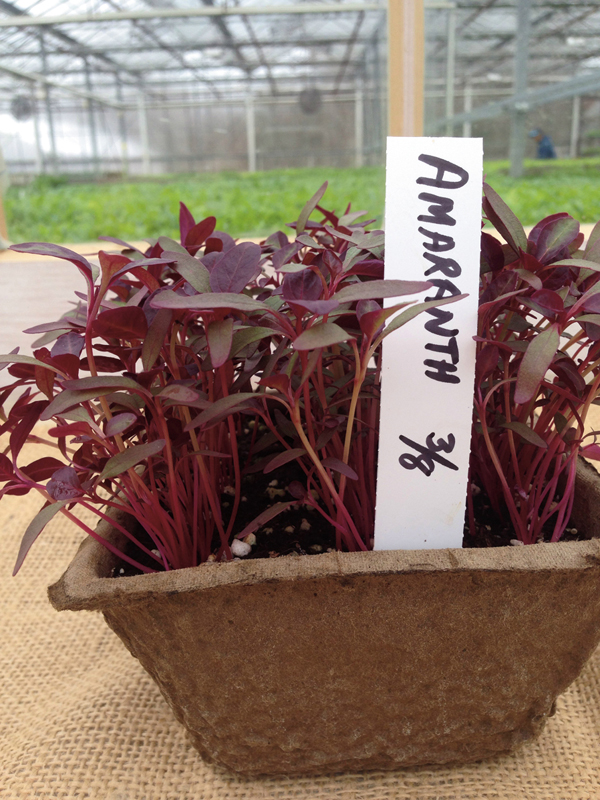
Peter Novajosky
Afterward, she told me she was somewhat surprised that no one had served up microgreens during the play she attended!
Well, you get the idea. Mixing and matching microgreens does wonders for salads and for entres of all kinds. One of my favorite fish recipes, haddock baked with olive oil, butter, and bread crumbs and topped with parsley and dill, gets a professional finishing touch when served on a generous amount of lemon-flavored greens. (Extra-virgin olive oil, by the way, is believed to improve the bodys absorption of nutrients from microgreens.) Brussels sprouts, baked or broiled, are enlivened when served atop a spicy blend of mustards, lettuces, and nasturtium. Breakfast becomes a robust brunch with the last-minute addition of an earthy mesclun blend to an omelet or a simple dish of scrambled eggs.
Taste, more than the obvious health benefits, is what has triggered the microgreens revolution in America. No one knows for sure who first came up with the idea of adding these greens to recipes, but the inspiration surely stemmed from the organic farming and gardening movement that has gained so much impetus and popularity in recent years.
Microgreens began to appear on the scene in Southern California in the mid-1990s. Johnnys Selected Seeds first listed microgreens in its catalog in 2001. Some say renowned Chicago restaurateur Charlie Trotter, who died at a young age a few scant years ago, was one of the first chefs to encourage farmers to grow microgreens, as he searched for a viable alternative to mesclun, the fresh salad mix of arugula, chervil, and various lettuces that had become commonplace on menus. For example, in the late 1980s he encouraged Lee Jones of the Chefs Garden farm in Huron, Ohio, to grow micro lettuces and baby beets and cabbage. Charlie was also the first to ask us to grow purple Brussels sprouts! Lee recalls.
Next page
